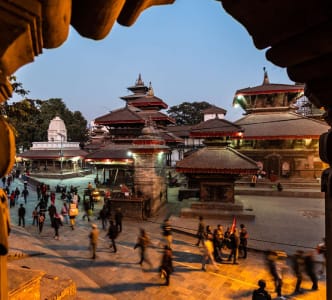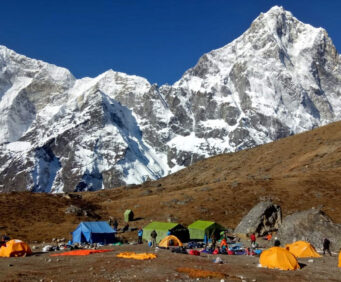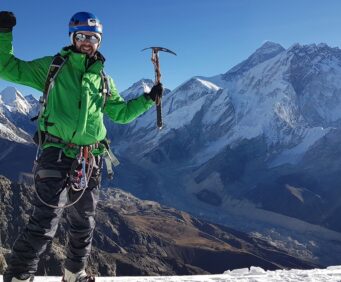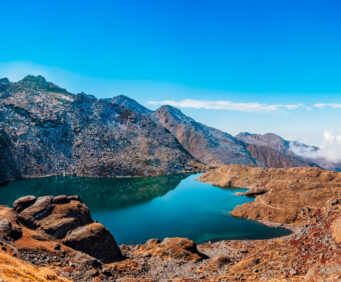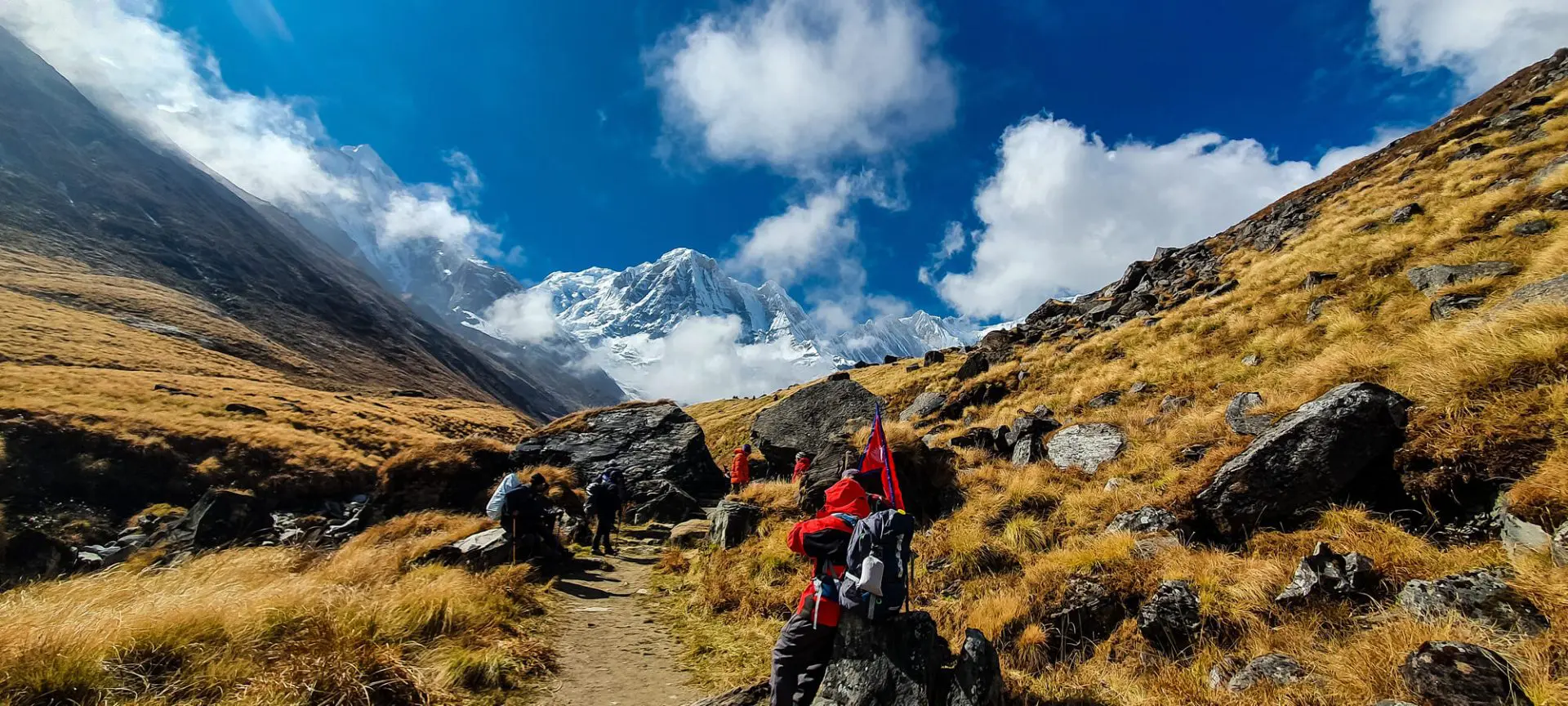
Annapurna Base Camp Trek in November 2025: Weather, Guide, Tips, and Complete Itinerary
17th August, 2025 - Posted By: Himalayan AbodeThe Annapurna Base Camp trek in November 2025 is one of the best ways to experience the breathtaking Himalayas of Nepal. November falls right in the autumn trekking season—a time when the skies are crystal clear, mountain views are spectacular, and the weather is pleasantly cool. For trekkers worldwide, it’s considered peak season to hike to Annapurna Sanctuary, standing face-to-face with the majestic Annapurna I (8,091m), Machapuchare (Fishtail), Hiunchuli, and other towering peaks.
If you are planning your adventure to the Annapurna Base Camp (ABC) this November, this comprehensive guide covers everything—weather conditions, itinerary, preparation tips, difficulty level, costs, permits, gear list, altitude information, tea houses, safety advice, and why November is the perfect month to trek.
Why Choose November for the Annapurna Base Camp Trek in 2025?
November is considered one of the best months for trekking in Nepal, especially for the Annapurna region. Here’s why:
- Stable Weather: November brings dry, stable weather with little to no rainfall.
- Clear Skies: Mountain views are sharp, and you’ll witness incredible sunrises over the Annapurna range.
- Mild Temperatures: Days are comfortably warm while nights are chilly but manageable with proper gear.
- Festive Atmosphere: November coincides with Nepal’s biggest festivals—Tihar (festival of lights) and Chhath, making it culturally enriching.
- Safe Trails: No risk of monsoon landslides or winter snowstorms.
Many trekkers prefer November because it offers the perfect balance between weather and scenery.
Annapurna Base Camp Trek Weather in November
The weather in Annapurna Base Camp during November is ideal for trekking:
- Daytime Temperature (Lower Region): 12°C – 18°C (54°F – 64°F)
- Night Temperature (Higher Elevation): -3°C – 5°C (26°F – 41°F)
- Weather Condition: Dry, sunny days with little chance of rain.
- Visibility: Excellent (up to 20 km on clear mornings).
At Annapurna Base Camp (4,130m), the nights can be freezing, so bring thermal wear, down jackets, gloves, and sleeping bags rated to -10°C.
👉 Tip: Start trekking early in the morning to enjoy warmer daytime temperatures and avoid afternoon winds.
Annapurna Base Camp Trek Difficulty
The Annapurna Base Camp trek is considered a moderate trek. In November, the trail conditions are at their best—dry and stable, making walking easier compared to monsoon or winter.
- Trekking Hours per Day: 5–7 hours
- Total Trekking Days: 7–12 days (depending on route)
- Highest Point: 4,130m at Annapurna Base Camp
- Altitude Sickness Risk: Mild to moderate (acclimatization is needed).
Even if you are a beginner trekker, November offers a friendly environment for the hike.
Standard Annapurna Base Camp Trek Itinerary for November 2025
Here’s a 13-day itinerary (starting and ending in Kathmandu):
Day 1: Arrival in Kathmandu (1,350m)
You will be picked up by airport representative and transferred to the hotel. Refresh at the hotel and explore around city.
Day 2: Sightseeing in Kathmandu Valley and prepare for the trek
Drive you to Bhaktapur for sightseeing. It is one of the oldest heritage site of Kathmandu valley. Prepare for the next day’s trip.
Day 3: Kathmandu to Pokhara (800)
Drive to Pokhara City by private car or tourist bus which takes around 7hrs and spend night at Lake side.
Day 4: Drive to Nayapul and trek to Ghandruk (1,940m)
Drive to Naya Pul (1 hour and 20 minutes) and trek to Ghandruk, a beautiful village mostly inhabited by the Gurung community.
Day 5: Ghandruk to Chhomrong (2,170m)
An hour climb up to Kimrungdanda with the scenic views of Annapurna South, Hiunchuli, Fishtail Mountain (Machhapuchhre), Ganggapurna, and Chomrong.
Day 6: Chhomrong to Bamboo (2,310m)
Chhomrong is a beautiful village located on the lap of the giant Annapurna. Uphill climb to Bamboo and stay overnight.
Day 7: Bamboo to Deurali (3,230m)
Trekking through a bamboo forest which is damp and cold. It is a steep climb up through a much drier forest before reaching Hinku Cave and descending to Deurali.
Day 8: Deurali to Annapurna Base Camp (4,130m) via Machhapuchhre Base Camp (3,700m)
Slowly climb up to ABC with the excellent views of the majestic Machhapuchhre along with Mt. Hiunchuli, Annapurna South, Annapurna I, Annapurna III, Gandharvachuli and Gangapurna which makes your trek more memorable.
Day 9: Annapurna Base Camp to Bamboo (2,310m)
Descend to Bamboo through the same way which takes around 5 hours
Day 10: Bamboo to Jhinu Danda (1,760m)
From Bamboo, it is an uphill trek to Kuldighar followed by a downhill walk to Chhomrong Khola. Then climb the stone steps to Chhomrong and then descends to Jhinu Danda.
Day 11: Trek to Naya Pul and drive to Pokhara (800)
Same way to Nayapul and drive to Pokhara.
Day 12: Pokhara to Kathmandu (1,350)
From Pokhara, drive back to Kathmandu by tourist bus.
Day 13: Final Departure
Journey ends in Nepal and drop off to International Airport 3 hrs prior to scheduled flight.
👉 Alternative Itineraries: Shorter 5-day versions are also possible if you skip Poon Hill.
Highlights of Annapurna Base Camp Trek in November
- Panoramic sunrise view from Poon Hill (Ghorepani) over Annapurna and Dhaulagiri.
- Walking through rhododendron forests and picturesque Gurung & Magar villages.
- Experiencing local culture, hospitality, and traditional teahouses.
- Stunning close-up view of Machapuchare (Fishtail Mountain).
- Reaching Annapurna Base Camp at sunrise—surrounded 360° by snowcapped peaks.
- Relaxing at Jhinu Hot Springs after days of trekking.
Annapurna Base Camp Trek Permits
For the ABC trek, you need:
- Annapurna Conservation Area Permit (ACAP): NPR 3,000 (approx. USD 25)
- Trekkers’ Information Management System (TIMS) Card: NPR 2,000 (approx. USD 15)
👉 Both can be obtained in Pokhara or Kathmandu before starting the trek.
Tea House Accommodation in November
During November, the trails and tea houses are busy because it’s peak season.
- Rooms: Basic twin-sharing wooden rooms with blankets.
- Meals: Dal Bhat, noodles, soups, pancakes, and tea.
- Facilities: Limited hot showers, charging ports (extra cost), and Wi-Fi (weak at higher altitudes).
👉 Tip: Book tea houses in advance or arrive early to secure rooms in November.
Packing List for Annapurna Base Camp Trek in November
Essential items include:
- Clothing: Thermal base layers, fleece, down jacket, trekking pants, gloves, beanie, scarf, and trekking boots.
- Gear: Sleeping bag (-10°C), trekking poles, water purification tablets, sunglasses, sunscreen.
- Other: First-aid kit, headlamp, power bank, snacks, and reusable water bottle.
Tips for Annapurna Base Camp Trek in November
- Start your trek early to enjoy warm weather and avoid crowd bottlenecks.
- Stay hydrated to minimize altitude sickness.
- Carry Nepali currency (NPR) as ATMs are unavailable along the trail.
- Train at least a month before with cardio and hiking exercises.
- Respect local culture and natural surroundings.
Safety and Altitude Sickness
- Symptoms: Headache, nausea, shortness of breath.
- Prevention: Ascend gradually, drink plenty of water, and avoid alcohol.
- Emergency: If symptoms worsen, descend immediately. Helicopter rescue is available from ABC.
Cultural Experience in November
November also gives you the chance to witness:
- Tihar Festival: Houses decorated with oil lamps, cultural dances, and rituals.
- Chhath Festival: Devotees worshiping the sun near rivers.
This cultural immersion makes your trek more than just a mountain journey—it’s a blend of nature and tradition.
Why Annapurna Base Camp Trek in November is Better than Other Months
- Compared to Summer (June–August): No leeches, landslides, or muddy trails.
- Compared to Winter (December–February): Warmer and safer with no snow blockage.
- Compared to Spring (March–May): Autumn skies are clearer, offering better views.
Recent Posts
